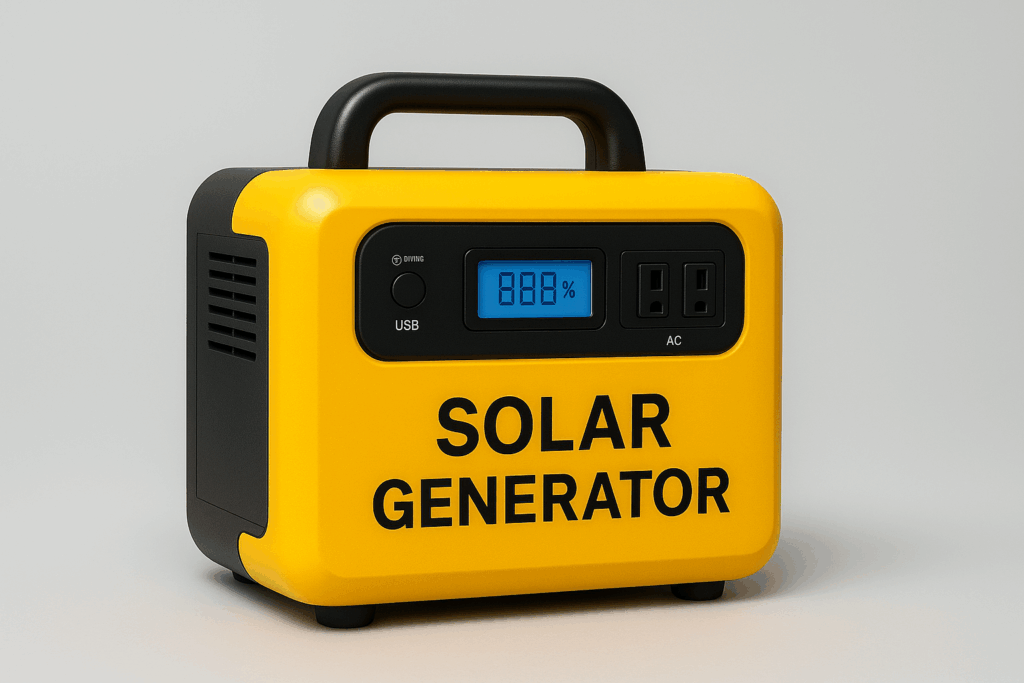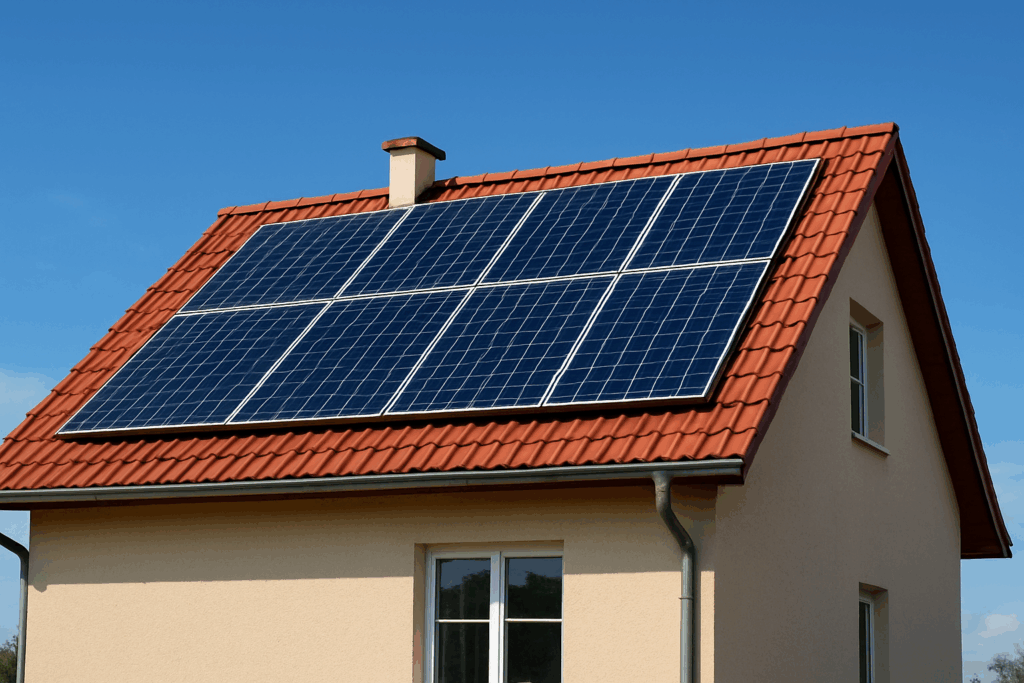A reliable source of backup power is no longer a luxury—it’s a necessity. Frequent power outages, rising energy costs, and environmental concerns have pushed many homeowners to search for alternative energy solutions. Among them, the solar power generator has emerged as one of the smartest investments you can make. Silent, eco-friendly, and cost-effective in the long run, a solar power generator ensures your family stays safe and comfortable when the grid goes down.
In this guide, we’ll explain how a solar power generator works and share 9 smart tips to make the most of it as your ultimate backup power solution.
What Is a Solar Power Generator?
A solar generator is a system designed to convert sunlight into usable electricity, store it in batteries, and release it when needed. Unlike traditional fuel generators, it does not rely on gas or diesel. Instead, it uses:
- Solar panels – capture energy from the sun.
- Battery storage – holds electricity for later use.
- Inverter – converts stored DC power into AC electricity for household appliances.
- Charge controller – manages the energy flow to avoid overcharging.
Unlike noisy, polluting fuel generators, a solar power generator is clean, quiet, and requires minimal maintenance, making it a reliable backup for homes, cabins, and even RVs.
Why Backup Power Matters Today
Power outages are more common than ever due to storms, grid failures, and extreme weather. Here’s why investing in a solar generator for backup is a smart decision:
- ✅ Reliability – Provides electricity during unexpected blackouts.
- ✅ Eco-Friendly – Uses sunlight, reducing reliance on fossil fuels.
- ✅ Cost-Effective – Once installed, sunlight is free.
- ✅ Peace of Mind – Keeps essential devices like fridges, lights, and medical equipment running.
9 Smart Tips on How a Solar Power Generator Provides Backup
1. Pick the Right Capacity for Your Needs
The first step in maximizing your solar generator is sizing it properly.
- Calculate wattage needs for essential appliances:
- Refrigerator: 150–300W
- Wi-Fi Router: 15–25W
- Lights (LED): 10–15W each
- Laptop: 50–100W
- Choose a generator that can support your total load plus extra for safety.
👉 Example: If your essentials total 1,000W, go for a solar power generator rated for at least 1,500W.

2. Choose Lithium Batteries Over Lead-Acid
The battery is the heart of any solar power generator.
- Lithium-ion batteries:
- Longer lifespan (up to 10 years).
- Lighter and more efficient.
- Faster charging.
- Lead-acid batteries:
- Cheaper upfront.
- Heavier and shorter lifespan.
For reliable backup, lithium-ion batteries are worth the investment.
3. Maximize Solar Panel Efficiency
Your solar generator is only as good as its panels. To get maximum backup power:
- Place panels where they receive direct sunlight (south-facing in most regions).
- Tilt panels at an angle equal to your latitude.
- Keep panels clean from dust, leaves, or snow.
👉 Pro Tip: Portable foldable solar panels can give flexibility if you move your generator around.
4. Use a Hybrid Backup Strategy
Relying solely on solar may not always be enough, especially in cloudy regions.
- Combine your solar power generator with:
- Grid charging (when solar is low).
- Gas backup generator (for emergencies).
This hybrid strategy ensures uninterrupted electricity no matter the weather.
5. Run Energy-Efficient Appliances
The more efficient your devices, the longer your solar generator can provide backup. Combine energy-efficient appliances with smart home organisation.
- Replace incandescent bulbs with LEDs.
- Use inverter refrigerators and air conditioners.
- Unplug appliances when not in use.
👉 Example: An energy-efficient fridge may run twice as long on the same backup power compared to an old model.
6. Add Smart Energy Management Tools
Modern solar power generators often include monitoring systems.
- Mobile apps show real-time battery levels.
- Smart controllers regulate charging and discharging.
- Some even allow remote management of appliances.
This ensures you always know how much backup power is available.
7. Perform Regular Maintenance
While low-maintenance, a solar power generator still needs care:
- Clean panels every few weeks.
- Inspect battery health every 6 months.
- Ensure connections and cables are tight.
Simple upkeep keeps your generator performing at its best for years.
8. Store Extra Energy for Emergencies
Plan ahead by oversizing your system slightly.
- Add extra solar panels for quicker charging.
- Use a larger battery bank to store more energy.
- Charge fully during peak sunlight hours.
That way, your solar power generator will have reserve energy for long outages.

9. Plan for Future Expansion
Your energy needs may grow over time. Choose a scalable solar power generator that allows:
- Adding more panels.
- Expanding battery storage.
- Upgrading the inverter.
This future-proofing ensures you don’t outgrow your system too quickly.
Solar Power Generator vs Gas Generator: Quick Comparison
| Feature | Solar Power Generator | Gas Generator |
|---|---|---|
| Fuel Source | Sunlight (free) | Gasoline/Diesel (paid) |
| Noise Level | Silent operation | Loud engine noise |
| Maintenance | Minimal (clean panels) | High (oil, filters, refueling) |
| Eco-Friendly | ✅ Yes | ❌ No |
| Long-Term Cost | Saves money over years | High recurring fuel cost |
| Backup Duration | Depends on stored power | Long if fuel available |
| Portability | Lightweight options | Heavier units |
👉 Verdict: A solar power generator is the smarter long-term investment, while gas generators are better for short-term heavy-duty needs.
Frequently Asked Questions (FAQ)
Q1. How long can a solar power generator provide backup?
- Depending on battery size, it can run essentials for 4–24 hours.
Q2. Can a solar power generator power a refrigerator or AC?
- Yes, but make sure the wattage matches your appliance needs.
Q3. Are solar power generators worth it for backup?
- Absolutely. They save money long-term, are silent, and eco-friendly.
Q4. What size solar power generator is best for emergencies?
- At least 1,500–2,000W for running multiple household essentials.
Conclusion
Investing in a solar power generator is one of the smartest steps you can take for reliable, eco-friendly backup power. By following these 9 smart tips, you can maximize performance, ensure long-lasting reliability, and enjoy peace of mind during outages.
Unlike noisy, fuel-hungry generators, a solar power generator gives you freedom from rising fuel costs and ensures clean, renewable energy whenever you need it.
👉 Take the next step today: explore the right solar power generator for your home and secure your family’s future with sustainable backup energy.